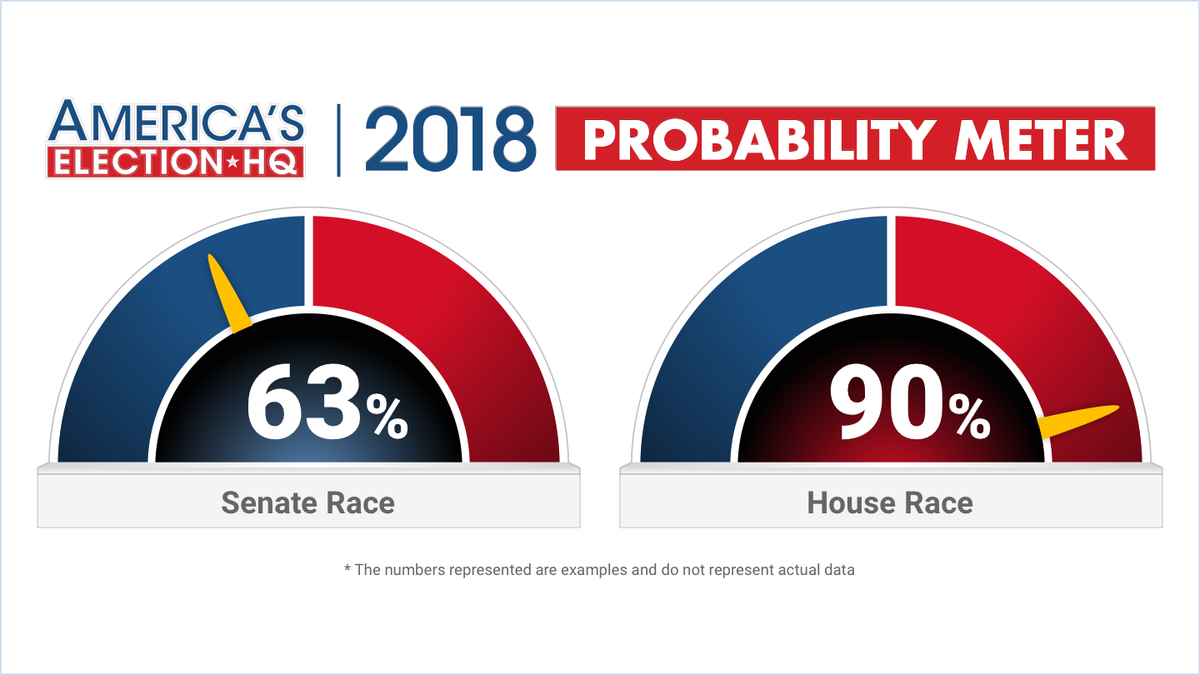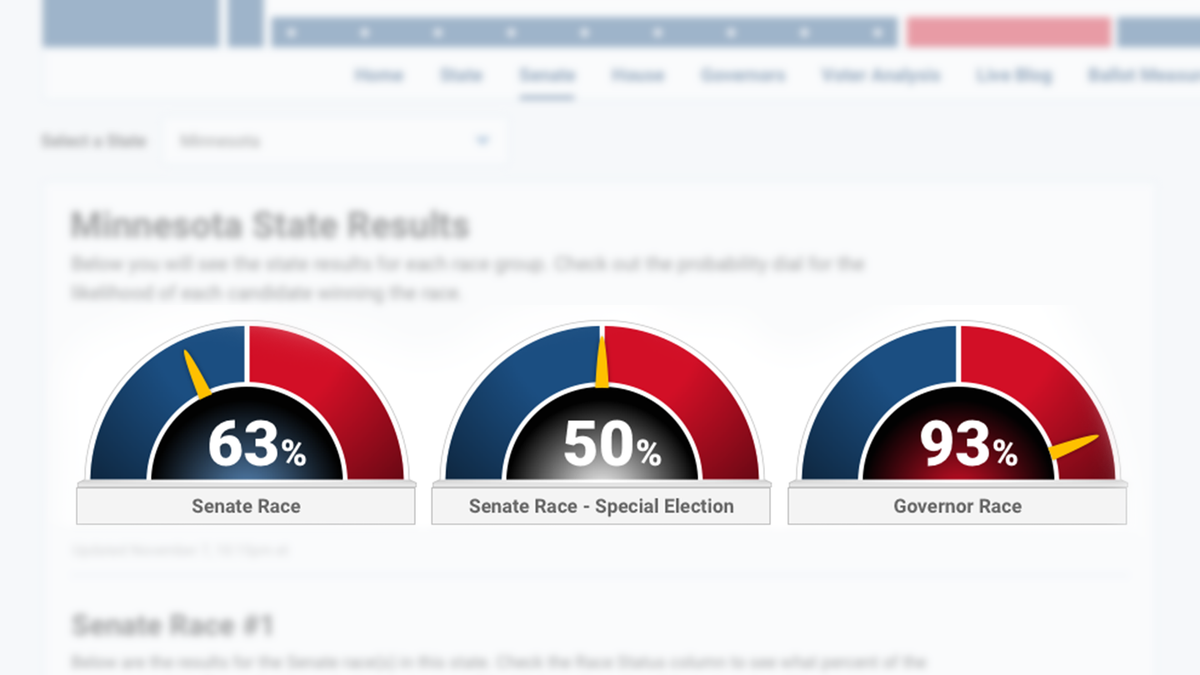
Want to get the latest read on which party has the edge this Election Day?
The Fox News Probability Meter is here for you.
The new tool is launching on FoxNews.com, to give midterm election-watchers a quick – and constantly updating – view of where the race for control of Congress stands on Election Day. This a simplified version of the dashboard that our decision team has used to determine who wins a race -- and allows all FoxNews.com users to watch the election and decide for themselves who is most likely to win.
The feature combines the Fox News Voter Analysis with actual vote returns to estimate the most likely outcome of the race at any given moment, in an easy-to-read dial.
Here’s how it works:
First, we extrapolate the returns using historical voting patterns and our election day polling, in order to estimate the final vote outcome. This estimate of the final outcome is inherently imperfect – an imperfection that gets reflected in what statisticians call the "margin of error." That margin of error depends primarily on how much actual vote has been counted. As the percentage of counted vote nears 100, the margin of error goes down – but early in the evening, that margin is quite high.
Second, we combine our estimate of the final outcome and the margin of error to assess how confident we are that the candidate (or party) our estimate puts in the lead will wind up winning.
Be careful about reading too much into the numbers. If the model shows one candidate has a 60 percent chance of winning, that means 40 percent of the time, our estimate will be wrong.
Only when our models show a candidate has a 99.5 percent chance of winning will the Fox News Decision Team "call" the race and declare that candidate the winner.
Fox News will be displaying Probability Meters for over 70 races on Election Day, as well as dials for control of both chambers of Congress.
Estimating who has control of Congress:
The Senate: Thirty-five Senate seats are being contested this year. Currently, Republicans hold a slim 51-49 majority. If the next Senate is 50-50, Republicans would still control the chamber, as Vice President Pence would cast a tiebreaker. The map this year is inherently challenging for Democrats. Republicans hold nine of the 35 seats up for election, while Democrats are defending 26 seats. Even if Republicans lose one seat, they will still keep control the chamber; if they lose more than one, the Democrats take control.
In estimating control of the Senate, we combine the meters of all 35 races to estimate the probability of the Republicans winning eight of the races (regardless of which ones). If the combined meter shows that Republicans have a 60 percent chance of winning eight or more seats, the dial shows a 60 percent chance of a Republican-led Senate. If the combined meter shows Republicans having a 40 percent chance of winning eight or more, the dial shows that the Democrats have a 60 percent chance of taking control.
The House: All 435 House seats are up this November. Currently the Republicans hold 236 seats. Whichever party wins 218 seats gains control.
Although we are not displaying dials for each race, we are running them internally in order to model which party is likely to control the chamber. Each individual dial combines the expected probability of the Democrat or Republican winning the seat with the actual vote coming in. We use this combined probability to estimate the chances of a party winning the seat. We then combine all 435 dials to estimate the chances of either party winning 218 seats. As with the individual races, when our probability exceeds 99.5 percent, we will “project” control of the House.
Special Senate Races: In Minnesota and Mississippi, special Senate races are being held to fill the expired terms of, respectively, Democrat Al Franken and Republican Thad Cochran, both of whom resigned. In Minnesota, the race is a traditional Democrat vs. Republican contest, and our dial shows who is likely to win it. In Mississippi, there is a ‘jungle primary’ featuring two Republicans and two Democrats. If none of the four candidates gets a majority, there will be a run-off on Nov. 27. We are not showing a dial in Mississippi but will be calling whether a candidate gets over 50 percent, or who will be in the run-off.

This is an example of the Fox News Probability Meter for individual races, and does not reflect actual data.
Meanwhile, two independent senators, Bernie Sanders of Vermont and Angus King of Maine, are running for reelection. If reelected, they will be caucusing with the Democrats, and, as a result, our dials treat them as such.
In California, the general election is a ‘non-partisan’ runoff between the top-two finishers in June’s ‘non-partisan’ primary. As both candidates are Democrats, our meters treat California as 100 percent likely to go to the Democrats.




